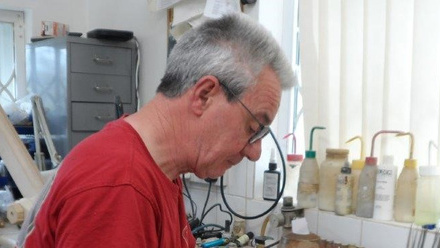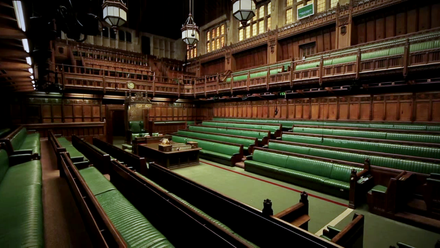I returned to the UK on the 8th March 2020 from Stockholm, where I had been working on the formulation of a European Conservation Standard for Architectural Paint Finishes. On 12th March Denmark closed it borders. By the third week of March the UK government was advising people not to go to pubs and restaurants but by then most people were already staying home and the streets were empty. When the lockdown was finally ordered on the 23rd March most people had already hidden themselves away with supplies of pasta and toilet rolls.
I was concerned about many things, one of them being my future career and earnings. My freelance conservation work in historic interiors involves a great of travelling and working on building sites. I remember feeling fortunate that I had completed two big projects before I had left for Stockholm and so could look forward to two payments but wondering how was I to complete my ongoing projects which all required site visits? I was relieved to hear of the Government’s Grant for the Self-Employed.
In late April when lockdown was still tight and I was restricting myself to one shopping trip a week and making lots of banana bread, two clients contacted me to ask when I was going to make my site visits to conduct my scheduled research. They made no reference to the Covid-19 crisis and the Government’s order to stay at home. The construction industry was still operating, and their site was open I was informed. I must say I felt pressurised. I was not alone in suspecting that the construction industry was ‘winging it’. Certainly, my observations of building sites I passed on my rare outings suggested that ‘social distancing’ was not being observed.
At that time the Government advice on working on building sites was unclear, and more later guidance published on May 19th offered different advice for those working in Northern Ireland, Scotland and Wales. In England the strategy encouraged workers in the construction industry to travel to work if their construction site was open and they could not work from home. However, Scottish Government guidance, for example, made clear that work on construction sites should stop, unless the work was for essential projects. Essential projects included those which wer critical to the national response to COVID-19, for example creating or repurposing facilities for treatment, research or testing. The guidance also permitted essential and time-critical maintenance and repair projects in certain sectors, including energy, communications and transport.
I wondered how the police would react if they discovered me travelling halfway across the country to take ‘essential paint samples’?
The ideal site with access already erected and checked. Security man in adjacent room with contact by mobile phone
London Mayor Sadiq Khan told Prime Minister Boris Johnson that construction workers should not be going into work, as quite a lot of construction is not “critical or essential”. Many builders said they feel ‘angry and unprotected’ but had no choice but to report for work. I am fortunate that I currently have money in my bank account and have a choice – but what was the future for my career in the field of historic interiors? One client asked me if I was not prepared to go on site to continue my research could I suggest another conservator who would? It was implied that if I did not go on site then and there, I would lose the job. What was I to do? What was happening to standards?
Standards are important. Sometimes standards are lifesaving. It was with great relief I discovered Icon’s Update on Coronavirus Activity. This provided a link to advice for those working in Historic Buildings and Sites to guidance and advice on safe working from government and sector bodies. I found the advice provided by the Chartered institute for Archaeologists especially useful. Did you know that on 29 April the UK Government confirmed that construction workers (this includes archaeologists working on constructions sites) were eligible to apply for Coronavirus testing if they exhibited symptoms. I felt even more agitated. I do feel that ICON should be offering specific advice for its members who work on building sites. It would be helpful to be able to cite the advice of my professional accreditation body when faced by a client who is being lax about Covid-19 requirements and expects me to take risks.
Having read the advice for archaeologists I decided that in the face of conflicting and questionable advice I needed to be pro-active and use my own common sense. I made a risk assessment for every potential project which would involve travel and site work. I decided that I would not undertake any travel on public transport but could use my bike if possible and taxis. I could not stay away overnight. I would insist on my Covid-19 avoidance measures being in place before I would go on site. I would make written notes during each visit. I would leave site immediately if social distancing standards were not being observed or I felt unsafe. I also made myself assess why I was undertaking this work. My decisions to undertake the work were based on a professional responsibility to continue ongoing projects rather than simply ‘earning money’. But the importance of earning money now before all historic interiors’ conservation projects came to a halt was obviously a concern.
Helen Hughes ACR
Header image: The Conservator on site – author wearing protective gear



